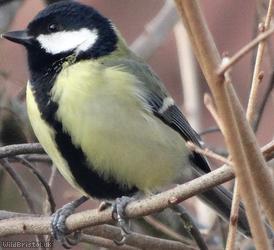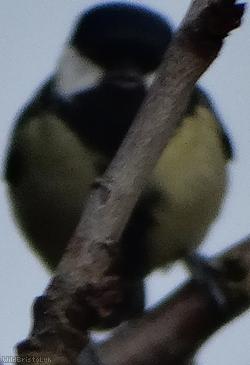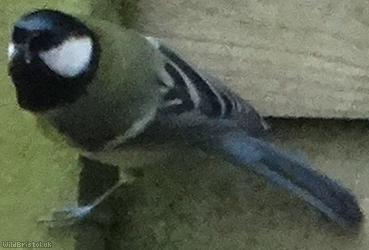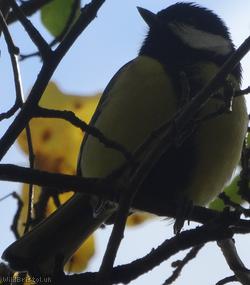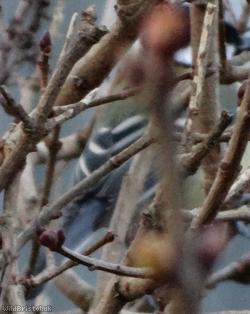Great Tit - Parus major
Favourite Photos
Species Description
- Diet
- insects, spiders, cockroaches, grasshoppers, crickets, lacewings, Earwigs, ants, flies, caddis flies, beetles, harvestmen, bees, wasps, snails, woodlice, (breeding time) caterpillars, berries, seeds, nuts, beech mast (in the winter)
- Description
- Black cap, white cheeks, upperparts greenish with a single whitish wing-bar, underparts yellow with bold black central stripe extending down from black bib. Sexes very similar but male has broader black stripe on belly. And is usually brighter in colour in the breeding season. Juveniles much more dull, with black replaced by sooty grey and cheeks yellowish. Usually seen in pairs and often mixed flocks of Tits and other birds.
- Habitat
- deciduous woodland, but very adaptable and found in coniferous woodland along with farmland, parks, gardens, allotments
- Breading
- usually occurs between March and May depending on weather conditions and food availability, nests in any suitable crevices, usually in trees, also takes readily to nest boxes. Lays around 12 eggs
- Population
- common resident (more than 2million birds)
- Predators
- Sparrowhawks, foxes, cats, badgers, great spotted woodpecker, Corvids (eat eggs and young e.g. Jay)
- Lifespan
- 3 years
- Size length
- 14cm
- Voice
- loud and ringing repetitive tea-cher, tea-cher…. Given Jan-May, sometimes similar two note phrase
- Confusion species
- Coal Tit (much smaller and duller with a white line/nape running down the back of the head)
Subspecies
| name | latinname | species | sightings | media | image |
|---|---|---|---|---|---|
| Great Tit | Parus major subsp. newtoni | 1 | 16 | 48 | 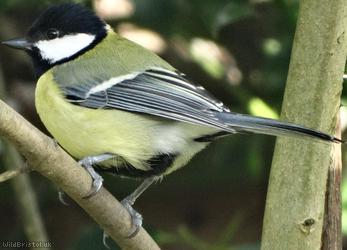 |
